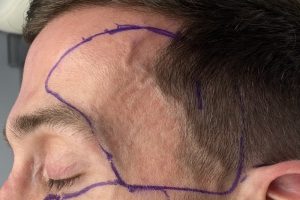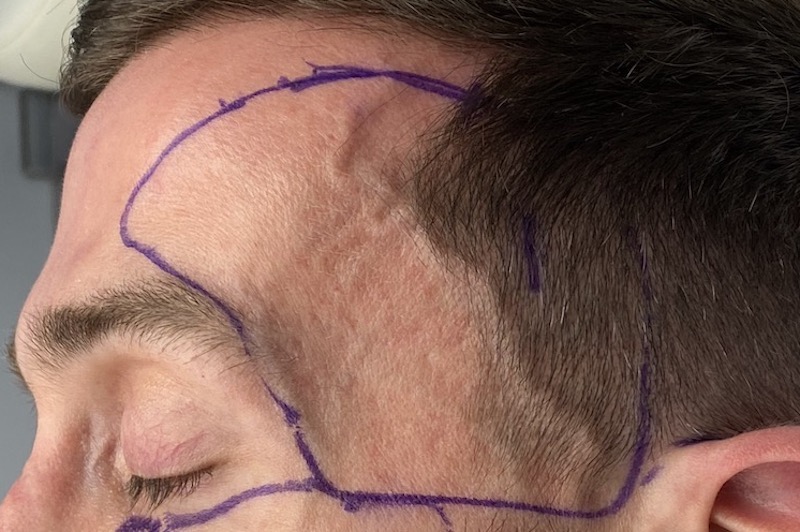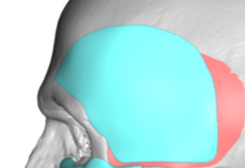Temporal implants are unique amongst al other forms of face and skull implants for two specific reasons. First it is a soft tissue implant as its intent is to augment the temporal muscle and not bone as the very outer surface of the side of the head is muscle. Secondly it is an implant that cab have three different tissue pockets, submuscular, subfascial and extra fascial. Which tissue pocket is appropriate depends on what external surface augmentation is desired.
When temporal augmentation needs to wrap around the side of the head onto the forehead or back of the head, the only tissue pocket that can be used is on top of the deep temporal fascia. This is because the stout deep temporal fascia which covers the muscle has a rigid attachment along the entire bony temporal line. As the bony temporal line runs from the brow bones all the way to the back of the head along the side of the skull, the only way to have a smooth transition of an implant from the side to the front or back of the head is on top of the deep temporal fascia.

For this reason dissection for the placement of this type of custom temporal implant can be safely done without injury to these neurovascular structures. But great care must be done to be certain the instruments stay on the deep temporal fascial surface when doing this blind dissection. To aid the crossing of the bony temporal line an additional dissection angle should be done from the superior forehead/scalp area which meets with that of the temporal fascial dissection as it crosses he bony temporal line at a 45 to 6o degree angle.
Dr. Barry Eppley
Indianapolis, Indiana




